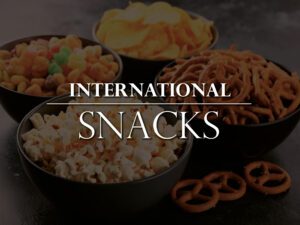According to DataIntelo, the global sugar-free confectionery market size is estimated to grow from USD 1.87 billion in 2023 to USD 3.47 billion by 2032, reflecting a robust compound annual growth rate (CAGR) of 6.98%. This growth is driven by an increasing health consciousness among consumers, particularly regarding the negative health impacts of sugar consumption such as obesity, diabetes, and dental issues.
The sugar-free confectionery market has witnessed a remarkable surge in popularity, driven by rising consumer awareness about the adverse effects of sugar consumption. As health-consciousness grows globally, consumers are actively seeking alternatives that satisfy their sweet cravings without compromising wellness. This has paved the way for sugar-free confections, which offer a guilt-free indulgence backed by innovative sweetening technologies.
Market Dynamics: Health Trends Driving Growth
One of the primary drivers of the sugar-free confectionery market is the increasing prevalence of lifestyle-related health issues such as diabetes, obesity, and cardiovascular diseases. Consumers are now prioritizing sugar intake management, pushing manufacturers to reformulate traditional candies, gums, and chocolates with low- or zero-calorie sweeteners. Additionally, dietary trends like keto and low-carb diets have further accelerated the demand for sugar-free options.
Product Innovation: Balancing Taste and Nutrition
Innovation plays a critical role in the sugar-free confectionery segment. Modern sweeteners such as stevia, erythritol, xylitol, and monk fruit are being used to mimic the sweetness of sugar without the added calories or glycemic impact. Companies are investing in R&D to enhance flavor profiles, texture, and shelf life, ensuring that sugar-free products deliver the same satisfaction as their sugary counterparts. Functional ingredients like added fiber, collagen, and vitamins are also being introduced, expanding product appeal.
Consumer Demographics: Expanding Beyond Diabetic Consumers
While sugar-free confections were initially targeted at diabetic consumers, the demographic base has widened significantly. Fitness enthusiasts, parents seeking healthier snacks for children, and older adults with dietary restrictions now form key consumer segments. The demand is particularly strong in developed economies like the U.S., Germany, and Japan, with emerging markets also beginning to show significant growth potential as awareness and disposable incomes rise.
Distribution Channels: E-Commerce and Specialty Stores Lead
E-commerce has emerged as a vital distribution channel for sugar-free confectionery products, offering convenience and access to a wide range of niche brands. Specialty health food stores, pharmacies, and supermarkets also play an essential role in the availability of these products. Brand transparency, nutritional labeling, and clean packaging are vital factors influencing consumer choices in these retail spaces.
Challenges and Future Outlook
Despite its growth, the sugar-free confectionery market faces challenges such as consumer skepticism about artificial sweeteners, price sensitivity, and limited availability in certain regions. However, with continued innovation, strategic partnerships, and educational marketing, the market is poised for sustained growth. As the demand for “better-for-you” treats continues to rise, sugar-free confectionery is expected to evolve from a niche segment to a mainstream choice.
Read more latest industry news and developments in our free to download magazine.
Never miss a story… Follow us on:
LinkedIn: International Confectionery
YouTube: @ConfectioneryTV
Media contact
Joseph Clarke
Editor, International Confectionery
Tel: +44 (0) 1622 823 920
Email: editor@in-confectionery.com









